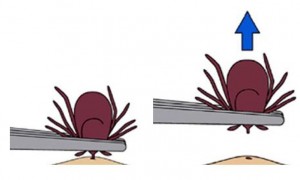READY TO GET STARTED?
REQUEST A FREE ESTIMATE
Fill out the form below or call (888) 466-7849 for a free, no-obligation estimate.
House flies get their name because they’re the most common fly found in homes (genius, right?). They aren’t very adventurous creatures…usually staying within 2 miles of where they were born. Of course like with all species, you have you’re “wild ones” who have been known to go in search of food up to 20 miles away from their birthing place.
Unlike other beings that use their tongue to taste, house flies use their feet. And talk about a sweet tooth, errr sweet foot, house flies feet are 10 million times more sensitive to sugar than the human tongue. That may be “sweet” for them but it’s not so sweet for us humans. House flies have been recorded to carry over 100 kinds of disease causing germs. This can be a great threat to the health of your home. So what can you do?
Do you have problems with flies? Call a professional to inspect your property to find the source of your house fly infestation.
Source: NPMA
PREVENT ANTS FROM MARCHING ONE-BY-ONE INTO HOMES THIS SPRING
Northwest Exterminating shares five simple steps to prevent ants this spring
As weather conditions improve, ants will soon begin to enter homes in search of food and water. Northwest Exterminating encourages homeowners to take proactive steps to reduce the likelihood of seeing these nuisance pests in your garage or crawling across the kitchen counter in the coming weeks.
Ants often infest kitchens and bathrooms, but homeowners may also encounter them in cooler spaces like basements, garages and around air conditioning units. The key to preventing ants from finding a way inside is to eliminate harborage sites around the property.
Experts from the National Pest Management Association (NPMA) recommend the following five simple steps that homeowners can do today to thwart an ant infestation.
For more information on ants or other common household pests, please visit www.callnorthwest.com.
Source: PPMA
According to new information gathered by the CDC the number of lyme disease cases is 10 times higher than the 30,000 cases each year that has previously been reported. Because not every case is reported, recent efforts have uncovered that the number of lyme disease cases is about 300,000 each year. The CDC is conducting 3 complimentary studies to improve their count of lyme disease cases.

How to Properly Remove a Tick
Source
To prevent tick bites:
For more information on Lyme disease visit the CDC.
For more information on how to control ticks visit Northwest Exterminating.
Homeowners often look for tips on how to keep pests out of their homes. Our blogs are often filled with tips from Northwest Exterminating on common approaches to keeping your house clean, sanitary, and with minimum clutter for keeping bugs out.
www.whatisipm.org offers an interactive home tour that can be used as a guide for you, along with your pest professional, to keep bugs from becoming an issue in and around your home.
The home tour offers great tips such as vacuuming frequently, wiping down counters, and inspecting luggage before bringing it into the house along with other helpful tips. We strongly encourage you to visit this site and see how you can prevent bugs from calling your house, HOME.
How can something as small as a flea be such a huge pain? Pet owners are all too familiar with the annoyance of fleas because they make us AND our pets miserable. Fleas attach themselves to warm-blooded animals (pets and humans) and feed on their blood. A flea bite can cause discomfort, painful, itchy red bumps and can lead to an allergic reaction. In some cases, they can even transmit diseases like the bubonic plague, murine typhus and transfer tapeworms in pets.
To prevent fleas from becoming a pest in your home, clean and vacuum frequently. A clean home is a healthy home and will aid in the prevention of other pests as well. Cleaning will help to remove any fleas and their eggs. Maintaining a clean yard is just as important, especially if you have pets that go outside often. A well kept lawn with no debris or pet droppings will reduce the flea population around your home. Bathe pets regularly and apply a flea and tick treatment. Most importantly, call a professional exterminator if you have fleas in your home. A flea infestation can be very difficult to get rid of and is best left to the professionals so the problem does not continue to grow.
Interesting Flea Facts:
Got a flea problem? Call Northwest Exterminating for professional, effective flea control.